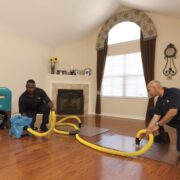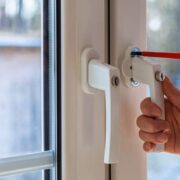Essentially, commercial properties such as buildings and commercial establishments have a different type of roofing needs. For one, they are the first line of defense of the tens to hundreds of tenants seeking shelter in your building or commercial establishment, and thus, it is crucial that you, as the property owner, are able to invest in a premium quality roofing system. Otherwise, not only you will lose a significant number of your tenants, but your retail business if you have one, could also be negatively impacted.
Now, as a sensible business owner, it is your responsibility to facilitate the maintenance of your property. While commercial roof repairs are just around the corner, it is, nonetheless, imperative that you do your part as the owner to understand what type of material is best suited for your needs. Especially if you’ve had the roof for decades that you can’t even remember the last time you had an inspection or a repair, chances are, it’s probably ripe for a replacement. And you shouldn’t wait out the next hurricane to tell you otherwise. Besides, summer is the best time to complete all the necessary maintenance work that you’ve been holding off for awhile.
To help you with your latest commercial roofing project, here, we have rounded up the most commonly used commercial roofing materials along with their best features and possible drawbacks.
Tar and Gravel or BTU (Built Up Roof)
BTU belongs to the low-slope roofing system and is one of the most popularly used materials in commercial roofing. Famous for its affordability and ease of application, BTU consists of multiple alternating layers of hot asphalt or tar, and gravel which makes it amenable to minor repairs. It is then finished off with a top coat of mica that lends it protection against hurricanes and UV light, and that which also makes it resilient against heavy foot traffic.
Nonetheless, what property owners really love about BTU is that it has a flexible cost structure. Meaning, they can conveniently estimate the roofing cost depending on the number of layers they need to meet certain durability requirements.
Drawbacks:
However, one of the downsides to using BTU is that due to its nature and color, it can be difficult to identify roof leaks once the material has aged. But on average, BTU can last for a good 15 to 30 years with proper care and maintenance. Still, despite having an expected lifespan of 15 to 30 years, it remains to be one of the shortest lifespans there is when it comes to commercial roofing materials. But if you’re currently working on a tight budget, then this would certainly do.
Expected Lifespan: 15 – 30 years
Modified Bitumen
Modified bitumen is similar to BTU in terms of composition but with an extra layer of polyester or fiberglass combined with the bitumen mixture. With this modification, it accords the material greater tensile strength and more resistance against weather. Additionally, you can opt to treat your modified bitumen to upgrade it to a higher level of fire resistance. And in terms of maintenance, it’s pretty easy to keep it in top shape just make sure to do annual inspections and general cleaning.
If you decide to go with modified bitumen, see to it that you choose 2 or 3-ply material because 1-ply is not durable enough and can break down much faster. 2 to 3-ply would cost you more, but it’s worth your buck.
Drawbacks:
Since modified bitumen roofs are black, they tend to absorb more heat as compared to others.
Expected Lifespan: 20 years
EPDM RUBBER: Ethylene Propylene Diene Monomer
EPDM or also known as “rubber roofing” is famous among property owners as one of the cheapest roofing materials available in the market. It’s lightweight and relatively easy to install. What’s more is that rubber roofs are comparatively durable and they do not scrape off easily.
Drawbacks:
EPDM is more of the utilitarian type of material so don’t expect it to be aesthetically pleasing. Most EPDMs are black in color so they tend to absorb more heat rather than repel them. As a result, it has the tendency to mess with your air conditioning system. Although EPDM is available in lighter colors, they are typically more expensive than the traditional black rubber.
In addition, because EPDMs are very lightweight, they are fragile and are more prone to tearing and puncturing. On the bright side, they’re fairly easy to fix.
Expected Lifespan: 20 – 35 years
Roll
Roll or Roofing felt is actually a low-cost material that is most commonly used in sheds. It’s made of polyester or fiberglass fleece, the same component that is used in asphalt shingles, and doused in a waterproofing agent. You can purchase it in two thickness–in 15 lbs and 30 lbs.
There isn’t much to expect with a roll because it’s only a one layer deep membrane so it is more of a temporary solution rather than a permanent one.
Drawbacks,
Obviously, it is less durable and could only last for 10 years.
Expected Lifespan: 10 years
Metal
If you have an allowance for splurging a little more, you might want to opt for a premium metal roofing. Not only are they environmental-friendly, metal roofs also look visually appealing. They’re naturally fire-resistant and are highly durable that their expected lifespan range from 40-70 years!
Drawbacks:
They’re one of the most expensive roofing materials and they’re quite prone to weather and wind damage. Furthermore, metal roofs are more susceptible to dents and scratches unlike other roofing options.
Expected Lifespan: 40 – 70 years
Spray Foam Roofing
Spray Foam Roofing is a roofing material produced from a type of plastic that first begins as a liquid spray and immediately turns into a foam which then coagulates as it attaches to a solid surface. An SPF roofing system although not as popular as those on this list, has been used both as a roofing and insulating material since the early 1960s. And because of its insulating properties, it is considered by many as an energy-saver.
The SPF is actually composed of two layers:
- The bottom which is polyurethane foam;
- and the top layer that is a coat of elastomeric silicone and is applied to help protect the surface from UV rays and other environmental forces.
Drawbacks:
It takes a lot of skill and mastery to be able to apply SPF flawlessly on any roof deck so if you happen to have hired an inexperienced contractor, you might end up with a less efficient outcome that is more likely to deteriorate prematurely. You should know that the removal process is not only tedious, but also expensive.
Now that we have covered the basics, we hope that you can now come up with a more informed decision for your commercial property. For a high-quality roofing job, check out this roofing contractor in VA and you can ask them for a free quote.













